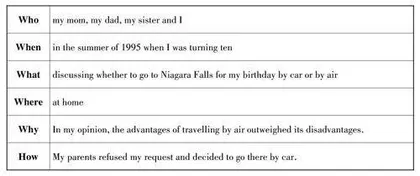深度解读原文,模仿语言风格
作者: 朱咏梅

【名师导学】
读后续写主要依托于语言表达能力、逻辑思维能力、语言理解能力和语言模仿能力,是对原文的延续和收尾,续写部分除了要合理并且跟原文在逻辑和内容上保持一致,还要保持语言风格的一致性。因此,续写的文章在语言上也要顺承原文的语言风格。这就要求我们除了注重原文的逻辑和内容,还需要模仿原文的语言风格,以达到续写部分与原文的高度融合。我们在阅读原文时须认真解读原文的文本语言,并在续写输出中创造性地模仿原文的语言风格。另外,我们在读后续写的过程中,经常会进入以下误区:
1. 续写文章过多使用高级词汇和生僻词汇。在写作中使用一些不常见的词汇确实会让一些评卷老师眼前一亮,毕竟在众多千篇一律的答卷中看到一种意思的不同表达方法,而且语境是正确的,会让疲惫的评卷老师拥有不一样的心情。但是如果过多使用生僻词汇,而且语境跟上下文不融合,这则会给人一种“为赋新词强说愁”的感觉。所以,我们在写作过程中一定要注意使用适合续写文章的生僻词汇。高级词汇可以用,但一定要与上下文语境一致。
2. 动作、情感描写太夸张。有些同学为了套用老师平常要求背诵的句式表达,强硬地给文章中的人物安排不合适的情感、动作,这使得故事情节相当突兀,例如,当描写学生因为做错事情而接受老师的批评的时候,需要描写其害怕的心理活动,可是有些同学直接把面对大型凶猛动物时害怕的表达搬了过来,运用了“At the sight of theteacher, I froze with terror, too scared to move an inch.”这一句子。这个句子的表达就有点夸张。因此,在续写过程中,动作、情感描写要切合原文的语言,合乎逻辑。
3. 对对话的处理不恰当。有些同学在续写的过程中不知道怎么写,但是为了凑字数,续写的内容大部分是文中人物的对话。在读后续写中能否描写对话这一问题上,不同老师有不同的看法,笔者认为这个也属于文章语言风格的模仿范畴。如果原文中基本没有对话,那么后面的续写内容也应尽量避免用对话来推动情节的发展,而应该用动作、心理或者情境等方面的描写。如果原文中有人物对话,但不多,续写部分也应该模仿,加入一些对话。总之,续写中对对话的处理,取决于原文对对话的处理。
那么,我们应该如何模仿原文的语言风格呢?我们可以参考以下几点:
1. 深度解读原文。只有在读懂原文的基础上,才能分析原文的语言风格,才能确定后面的语言基调。
2. 从原文的情感、语言等方面分析文本。读完原文,解析每个人物的性格特点,从原文中动作、情感、对话、环境等方面的描写观察文章中描述人物的语言特点,确定原文的语言风格。
3. 模仿原文的语言风格,尽量和原文保持一致。确定原文的语言风格后,创造出与原文性格特点一致的人物形象,运用与原文一致的文笔手法,对后续的事件展开合理的创作。
【案例导引】
阅读下面材料,根据其内容和所给段落开头语续写两段,使之构成一篇完整的短文。
I was turning ten in the summer of 1995. On a warm evening while we were at dinnertable, my mom announced we were taking a trip to Niagara Falls when the summer vacationstarted so that we could celebrate my birthday there.
It all sounded incredibly good until Mom said we would be driving to Canada. As wasoften the case, my dad would do all the driving when my mom managed the directions. ButDad often took wrong turns along the way and Mom would not stop complaining.
I didn't like the car rides and looked over at my 6⁃year⁃old sister, Marlene. Shegiggled at me and rolled her eyes. Driving in the car meant Id share the back seat with mysister, who would never stop making noise unless she was asleep.
“Hey, can we take a plane there instead?”I asked with mouthfuls of hamburger andFrench fries. Sometimes, when Dad had a day off from work, we would drive out to IdlewildAirport to watch the planes take off and land. I always hoped that one day I could get to sitin my own seat on one of those planes. It would be so cool to get high up the beautiful sky.
“Sorry, honey, maybe next time,”my mother replied as she and my father exchangedglances. I turned to my sister, hoping she would say she wanted to get on a plane too, but she simply stuck her tongue (舌头) out at me and giggled again.
Don't they get it? I was in desperate need of a plane ride, and I needed something coolto talk about with my friends when we got home.“Sitting in the back seat of the car sucks,”I blurted out (脱口而出).
“Jay!”my mom shouted.“Watch your mouth!”
“OK, sorry, but I really want to go by plane,”I said.
“This conversation is over,”my dad growled.“Finish your eating and go to your room.”
注意:续写词数应为150左右。
Paragraph 1:
We left two days later on Saturday morning in our car.__________________________
Paragraph 2:
I was told to wait until we checked in our bags at the airport._____________________________
文本解读
一、原文的语篇要素
二、原文的情节脉络
三、原文的巧妙用词
1. On a warm evening while we were at dinner table, my mom announced we weretaking a trip to Niagara Falls when the summer vacation started so that we could celebratemy birthday there. 在一个温暖的晚上,我们在吃饭的时候,我的妈妈宣布暑假开始的时候,我们将要去尼亚加拉大瀑布旅行,以便我们能在那里庆祝我的生日。
文中对环境的描写用了warm这个词,而且这次旅行的目的是celebrate my birthday,这就为后文的续写奠定了基调——一定是以“我”为主的一次旅行。
2. It all sounded incredibly good until Mom said we would be driving to Canada. 这一切听起来都非常好,直到妈妈说我们会开车去加拿大。
这里用副词incredibly来修饰good这个形容词,说明“我”对自己生日的安排很满意,又用一个until引导的时间状语从句,点出了美中不足的地方。因为这次的旅程是专门为庆祝“我”的生日而准备的,所以后面“我”为自己争取坐飞机去那里也就合情合理了。
四、文章运用了各种语言风格来推动文章的发展
1. 现在分词作主语和定语从句的运用
Driving in the car meant Id share the back seat with my sister, who would never stopmaking noise unless she was asleep. 开车意味着我要跟我的妹妹分享后面的座位,她不会停止制造噪声除非她睡着了。
Driving in the car为现在分词作主语,现在分词的使用避免了句式的单一,并且后面用了一个定语从句who would never stop making noise unless she was asleep,进一步说明了“我”不想开车去瀑布的原因。
2. 对话的描写和状语从句的运用
“Sorry, honey, maybe next time,”my mother replied as she and my father exchangedglances.“对不起,亲爱的,可能下一次(我们再坐飞机去吧,这次不行)。”妈妈回答道,与此同时她和爸爸交换了一下眼色。
这句话用as引导的时间状语从句对人物的动作进行细节描写,为后面的续写做了铺垫。读到这里,让人不禁深思:为什么爸爸妈妈要交换眼色呢?前面对话的描写和后面动作的描写让人思考妈妈这句话暗含的意思是什么。如果我们能注意到这些写作特点并将其运用到后面的续写中去,那么我们就能做到续写文章与原文的语言风格类似。
3. 非谓语作状语和宾语从句的运用
I turned to my sister, hoping she would say she wanted to get on a plane too, but shesimply stuck her tongue out at me and giggled again. 我转向我的妹妹,希望她能说她也希望坐飞机,但是她仅仅向我吐了吐舌头并且再次咯咯地笑了起来。
本句中,hoping she would say she wanted to get on a plane too用了非谓语作状语和宾语从句,表达了“我”希望妹妹能站在自己这边劝说父母改变出行方式,但是妹妹仅仅向“我”吐了吐舌头,而且再一次笑了,这让人觉得她的笑内含深意,也为后面的续写奠定了基础。
4. 用对话等描写表达角色的感情
“Jay!”my mom shouted.“Watch your mouth!”..“. This conversation is over,”my dadgrowled.“Finish your eating and go to your room.”“杰伊!”妈妈大喊。“注意你的言辞!”……“谈话结束了,”我爸爸咆哮道。“吃完回到你的房间去。”